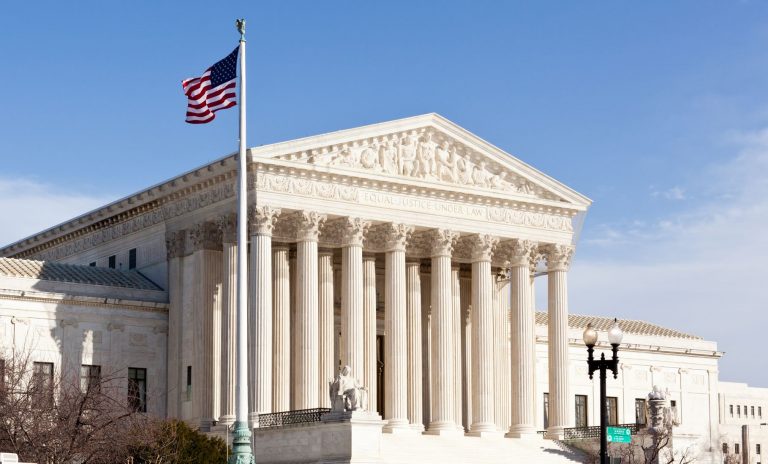How HR Can Navigate The Post-Affirmative Action Landscape
How HR Can Navigate The Post-Affirmative Action Landscape
From campus to corporate
Highlights:
- The Supreme Court’s affirmative action ruling may influence workplace diversity efforts significantly.
- Title VII implications from the Equal Protection Clause interpretation add a layer of complexity to workplace policies.
- Employers should reevaluate DEI policies, particularly those related to race, to mitigate potential risks.
On June 29, 2023, the United States Supreme Court held that affirmative action policies at universities violate the Constitution’s Equal Protection Clause and Title VI of the Civil Rights Act of 1964. While the ruling only directly applies to colleges and universities, the rationale for the court’s decision, along with some of the language from the opinion itself, suggests the court might be willing to curtail employers’ ability to enact certain diversity, equity, and inclusion (DEI) policies in the workplace. Nevertheless, while employers should review their DEI policies in light of the court’s ruling, employers need not cast aside their DEI efforts altogether.
Landmark Decision for Universities – and Employers?
In Students for Fair Admissions, Inc. v. President & Fellows of Harvard Coll., a group of students challenged the constitutionality of affirmative action policies (which considered applicants’ race in the admissions process) at Harvard College and the University of North Carolina. Writing for the majority, Chief Justice John Roberts wrote that while affirmative action policies are “commendable” in the goals they seek to achieve, “racial classifications are simply too pernicious to permit.”
Chief Justice Roberts also noted that the “time for making distinctions based on race had passed.” Thus, the majority concluded that affirmative action policies violate the Constitution’s Equal Protection Clause (which applies to public institutions) and Title VI (which applies to private institutions receiving federal funds).
In his majority opinion, Chief Justice Roberts also noted, “Nothing in this opinion should be construed as prohibiting universities from considering an applicant’s discussion of how race affected his or her life, be it through discrimination, inspiration or otherwise.” However, the court made clear that the student “must be treated based on his or her experiences as an individual – not on the basis of race.” For example, considering “a student who overcame racial discrimination…must be tied to that student’s courage and determination.”
In his concurring opinion, Justice Neil Gorsuch appeared to suggest that race-based policies would also be unlawful under Title VII, which prohibits employers from discriminating on account of race. Justice Gorsuch noted that Title VI prohibits higher education institutions from “treating any individual worse even in part because of his race, color, or national origin and without regard to any other reason or motive the recipient might assert.” He also noted that Title VI and Title VII both “codify a categorical rule of individual equality, without regard to race.” This language seemed to suggest that the court’s logic would apply to Title VII.
Much Discussion, but Little Certainty
On the same day the Supreme Court released its opinion, Equal Employment Opportunity Commission (EEOC) Chair Charlotte Burrows issued a statement in which she appeared to criticize the court’s decision, which she said would “undoubtedly hamper the efforts of some colleges and universities to ensure diverse student bodies.”
Nevertheless, Chair Burrows wrote that the ruling did not address employers’ efforts to “foster diverse and inclusive workforces” and that “it remains lawful for employers to implement diversity, equity, inclusion and accessibility programs that seek to ensure workers of all backgrounds are afforded equal opportunity in the workplace.”
Weeks after the court’s ruling, however, 13 Republican attorneys general sent a joint letter to the CEOs of Fortune 100 companies urging the companies to “immediately cease any unlawful race-based quotas or preferences” the companies had “adopted for [their] employment and contracting practices.” The letter primarily relied upon Title VII and 42 U.S.C. § 1981, which prohibits discrimination in contracting. The attorneys general also noted that while “leading institutions should continue to provide opportunities to underprivileged Americans,” race “is a poor proxy for what is fundamentally a class distinction” and “drawing crude lines based on skin color is not a lawful outlet.”
In response, the Chairs of the Democratic Attorneys General Association responded with a letter of their own, writing that “to be clear: it is legal for businesses to be responsive to their workforce’s wishes and concerns through diversity programs and initiatives.” The letter did not address Title VII or 42 U.S.C. § 1981 but accused the Republican attorney generals of perpetuating “backwards philosophies.”
Employers Should Not Be Alarmed – But Should Take Action
While the court’s ruling only applies to colleges and universities, its logic arguably extends to Title VII, which applies to employers. This was most evident in Justice Gorsuch’s concurring opinion, but even Chief Justice Roberts’ majority opinion contained language that could be applied to Title VII just as easily as Title VI. The EEOC’s statement, along with the back-and-forth letters from attorneys’ generals, certainly muddies the water on this issue.
Moving forward, employers should closely examine DEI policies and, specifically, race-conscious policies, such as those that require specific diversity in applicant pools and require specific diversity in hiring decisions. These measures were already being scrutinized, but the Supreme Court’s decision appears to have focused more attention on the policies, as evidenced by the letters from the attorneys general.
This increased attention is likely to increase the risk of so-called “reverse-discrimination” claims. Thus, employers should weigh the benefits associated with these programs against the risk that such programs will lead to discrimination claims.
That said, employers need not disregard all DEI policies to reduce their risk. Just as Chief Justice Roberts noted that universities were free to consider race so long as it considered it in the context of an applicant’s “experiences as an individual,” so too can an employer presumably consider an employee’s race so long as it considers the employee’s “experiences as an individual.”
Employers may want to enact policies that adopt a more holistic view of diversity that accounts for other categories, in addition to race, to ensure that they are accounting for other aspects of diversity. For example, employers may want to consider socioeconomic background, gender, disability and other similar identities when enacting diversity policies. These types of diversity policies appear to be entirely consistent with the Supreme Court’s ruling.
This article originally published on HR.com in “HR Legal & Compliance Excellence” on October 3, 2023 and is republished here with permission from the publication.










